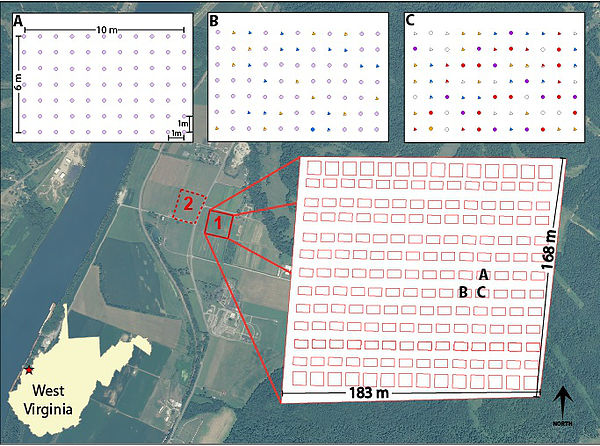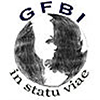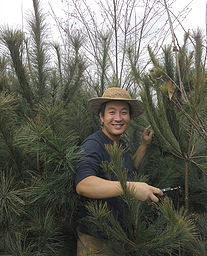Jingjing Liang
Assistant Professor of Quantitative Forest Ecology, Purdue University, USA
Adjunct Professor, Beijing Forestry University, China
Professeur associé, Université du Québec à Montréal, Canada
Associate member, Centre d’étude de la forêt (CEF), Canada
Department of Forestry and Natural Resources, 715 W. State St, West Lafayette, IN 47906, USA
E-mail address: jjliang (at) purdue.edu
EDUCATION
- 2005, Ph.D. (Forestry), University of Wisconsin-Madison
- 2001, B.S. (Ecology- Environmental Sciences), Peking University
PROFESSIONAL EXPERIENCE
- 2018 – present Assistant Professor of Quantitative Forest Ecology, Department of Forestry and Natural Resources, Purdue University
- 2017– 2018 Associate Professor of Forest Ecology, School of Natural Resources, West Virginia University
- 2011—2017 Assistant Professor of Forest Ecology, School of Natural Resources, West Virginia University
- 2007—2011 Assistant Professor of Forest Biometrics and Management, School of Natural Resources and Agricultural Sciences, University of Alaska Fairbanks
- 2006—2007 Post-doctoral Biometrician
Forest Sciences Laboratory, U.S. Department of Agriculture, Rocky Mountain Research Station - 2005—2006 Research Associate
Department of Forest and Wildlife Ecology, University of Wisconsin-Madison - 2001—2005 Research Assistant
Department of Forest and Wildlife Ecology, University of Wisconsin-Madison
EDITORSHIP
- Since 2011, Associate Editor, Canadian Journal of Forest Research
- Since 2017, Associate Editor, Scientific Data
- Since 2017, Associate Editor, Forest Ecosystems
CERTIFICATION
- 2010-present, Certified Forester, Society of American Foresters, CN#4052
- 2015, MSHA Part 46
- 2013-2015, Emergency Medical Technician, State of West Virginia, CN#WV075263
Recent Keynote and Invited Presentations
- 2017 (keynote) — Exploring global biodiversity-forest productivity relationship using GFBI data. 2017 Annual Conference of . New Orleans, USA
- 2017 (invited) — GFBI data and structure.
- 2017 (invited) —Biodiversity-ecosystem functioning relationship and global forest ecosystems. Universitat de Lleida, Spain
- 2017 (invited) —Stand Initiation Diversity Experiment and Biodiversity-ecosystem functioning relationship. University of Freiburg, Germany
Notable Synergistic Activities
- 2017: Co-Founder— Secured grants of $200,000 to establish two Global Forest Biodiversity Research Centers, in Lleida Spain and Beijing China. Three more facilities will be developed in other countries to complete the global network of five centers
- 2017: Co-Chair—Inaugural Global Forest Biodiversity Initiative Conference & GFBI-FECS Joint Symposium 2017 (Beijing China, September 6-9 2017, with >100 participants from >50 countries)
- 2017: Developed Global Forest Biodiversity Initiative database (GFBI v.2.0), the most comprehensive global forest inventory database
- 2016-present: Co-Founder and Coordinator— Global Forest Biodiversity Initiative (GFBI, http://www.gfbinitiative.org/, with 150 members from 96 countries)
Featured Publications
Liang, J, T. W. Crowther, N. Picard, S. Wiser, M. Zhou, G. Alberti, E.-D. Schulze, A. D. McGuire, F. Bozzato, H. Pretzsch, S. de-Miguel, A. Paquette, B. Hérault, M. Scherer-Lorenzen, C. B. Barrett, H. B. Glick, G. M. Hengeveld, G.-J. Nabuurs, S. Pfautsch, H. Viana, A. C. Vibrans, C. Ammer, P. Schall, D. Verbyla, N. Tchebakova, M. Fischer, J. V. Watson, H. Y. H. Chen, X. Lei, M.-J. Schelhaas, H. Lu, D. Gianelle, E. I. Parfenova, C. Salas, E. Lee, B. Lee, H. S. Kim, H. Bruelheide, D. A. Coomes, D. Piotto, T. Sunderland, B. Schmid, S. Gourlet-Fleury, B. Sonké, R. Tavani, J. Zhu, S. Brandl, J. Vayreda, F. Kitahara, E. B. Searle, V. J. Neldner, M. R. Ngugi, C. Baraloto, L. Frizzera, R. Bałazy, J. Oleksyn, T. Zawiła-Niedźwiecki, O. Bouriaud, F. Bussotti, L. Finér, B. Jaroszewicz, T. Jucker, F. Valladares, A. M. Jagodzinski, P. L. Peri, C. Gonmadje, W. Marthy, T. O’Brien, E. H. Martin, A. R. Marshall, F. Rovero, R. Bitariho, P. A. Niklaus, P. Alvarez-Loayza, N. Chamuya, R. Valencia, F. Mortier, V. Wortel, N. L. Engone-Obiang, L. V. Ferreira, D. E. Odeke, R. M. Vasquez, S. L. Lewis, and P. B. Reich. 2016. Positive biodiversity-productivity relationship predominant in global forests. Science 354.
Details and downloads
Liang J, Zhou M, Tobin PC, McGuire AD, & Reich PB (2015) Biodiversity influences plant productivity through niche-efficiency. PNAS 112(18):5738-5743.
PDF
Details and Downloads
Liang, J. (2012) Mapping large-scale forest dynamics: a geospatial approach. Landscape Ecology 27(8): 1091-1108.
ABSTRACT, PDF
Full List of Publications
PEER-REVIEWED JOURNAL ARTICLES
2017
- Zhang, C., Y. Cheng, H. He, L. Gao, J. Liang, and X. Zhao. 2017. Structural drivers of biomass dynamics in two temperate forests in China. Ecosphere 8(3):e01752. 10.1002/ecs2.1752
- Fan C, Tan L, Zhang P, Liang J, Zhang C, Wang J, Zhao X, von Gadow K (2017) Determinants of mortality in a mixed broad-leaved Korean pine forest in northeastern China. Eur J For Res:1-13. doi:10.1007/s10342-017-1045-4
2016
- Liang, J,T. W. Crowther, N. Picard, S. Wiser, M. Zhou, G. Alberti, E.-D. Schulze, A. D. McGuire, F. Bozzato, H. Pretzsch, S. de-Miguel, A. Paquette, B. Hérault, M. Scherer-Lorenzen, C. B. Barrett, H. B. Glick, G. M. Hengeveld, G.-J. Nabuurs, S. Pfautsch, H. Viana, A. C. Vibrans, C. Ammer, P. Schall, D. Verbyla, N. Tchebakova, M. Fischer, J. V. Watson, H. Y. H. Chen, X. Lei, M.-J. Schelhaas, H. Lu, D. Gianelle, E. I. Parfenova, C. Salas, E. Lee, B. Lee, H. S. Kim, H. Bruelheide, D. A. Coomes, D. Piotto, T. Sunderland, B. Schmid, S. Gourlet-Fleury, B. Sonké, R. Tavani, J. Zhu, S. Brandl, J. Vayreda, F. Kitahara, E. B. Searle, V. J. Neldner, M. R. Ngugi, C. Baraloto, L. Frizzera, R. Bałazy, J. Oleksyn, T. Zawiła-Niedźwiecki, O. Bouriaud, F. Bussotti, L. Finér, B. Jaroszewicz, T. Jucker, F. Valladares, A. M. Jagodzinski, P. L. Peri, C. Gonmadje, W. Marthy, T. O’Brien, E. H. Martin, A. R. Marshall, F. Rovero, R. Bitariho, P. A. Niklaus, P. Alvarez-Loayza, N. Chamuya, R. Valencia, F. Mortier, V. Wortel, N. L. Engone-Obiang, L. V. Ferreira, D. E. Odeke, R. M. Vasquez, S. L. Lewis, and P. B. Reich. 2016. Positive biodiversity-productivity relationship predominant in global forests. Science 354.
Details and downloads - Liang J, Watson JV, Zhou M, Lei X (2016) Effects of productivity on biodiversity in forest ecosystems across the United States and China. Conservation Biology30:308-317 (DOI: 10.1111/cobi.12636).
PDF
Details and Downloads - Ma, W., J Liang, JR Cumming, E. Lee, A. B. Welsh, J. V. Watson, and M. Zhou. (2016) Fundamental shifts of central hardwood forests under climate change. Ecological Modelling332:28-41.
PDF
Details and Downloads - A. Hovi, J. Liang, L. Korhonen, H. Kobayashi, M. Rautiainen, (2016) Quantifying the missing link between forest albedo and productivity in the boreal zone. Biogeosciences2016,1-35.
Details and Downloads
2015
- Liang J, Zhou M, Tobin PC, McGuire AD, & Reich PB (2015) Biodiversity influences plant productivity through niche-efficiency. PNAS112(18):5738-5743.
PDF
Details and Downloads - Watson, JV, Liang, J., Tobin, PC, Lei, X., Rentch, JS, & Artis, CE (2015). Large-scale forest inventories of the United States and China reveal positive effects of biodiversity on productivity. Forest Ecosystems2: 22.
Abstract, PDF - Lee, E., He, Y., Zhou, M.,Liang, J. (2015): Potential feedback of recent vegetation changes on summer rainfall in the Sahel, Physical Geography,DOI: 10.1080/02723646.2015.1120139
Details and Downloads
2014
- Picard, N., Liang, J. (2014) Matrix models for size-structured populations: unrealistic fast growth or simply diffusion? PLoS ONE9(6): e98254. doi:10.1371/journal.pone.0098254.
- Liang, J., Zhou, M. (2014) Large-Scale Geospatial Mapping of Forest Carbon Dynamics. Journal of Sustainable Forestry33:S104-S122.
PDF - Peterson, R.L., Liang, J., Barrett, T.M. (2014) Modeling Population Dynamics and Woody Biomass in Alaska Coastal Forest.Forest Science60(2): 391-401(11).
PDF
2013
- Liang, J., Picard, N. (2013) Matrix Model of Forest Dynamics: An Overview and Outlook. Forest Science 59(3): 359-378.
ABSTRACT, PDF - T. Malone, J. Liang, E.C. Packee. (2013) Total and merchantable volume of white spruce in Alaska. Western Journal of Applied Forestry28(2): 71-77.
2012
- Liang, J. (2012) Mapping large-scale forest dynamics: a geospatial approach. Landscape Ecology27(8): 1091-1108.
ABSTRACT, PDF - F.-M. Yuan, S.-H. Yi, A. D. McGuire, K.D. Johnson, J. Liang, J.W. Harden, E.S. Kasischke, and W.A. Kurz. (Accepted) Assessment of Historical Boreal Forest C Dynamics in Yukon River Basin: Relative Roles of Warming and Fire Regime Change. Ecological Applications22:2091–2109.http://dx.doi.org/10.1890/11-1957.1.
2011
- Liang, J., M. Zhou, D.L. Verbyla, L. Zhang, A.L. Springsteen, T. Malone. 2011. Mapping Forest Dynamics under Climate Change: A Matrix Model. Forest Ecology and Management 262: 2250-2262.
ABSTRACT, PDF - Young, B., J. Liang, F.S. Chapin III. 2011. Effects of Species and Tree Size Diversity on Recruitment in the Boreal Forest: A Geospatial Approach. Forest Ecology and Management 262(8): 1608-1617.
ABSTRACT - Ping, C-L., G.J. Michaelson, L. Guo, M.T. Jorgenson, M. Kenevskiy, Y. Shur, F. Dou, J. Liang. 2011. Soil Carbon and Material Fluxes across the Eroding Alaska Beaufort Sea Coastline. Journal of Geophysical Research 116, G02004, doi:10.1029/2010JG001588
ABSTRACT
2010
- Liang, J., M. Zhou. 2010. A Geospatial Model of Forest Dynamics with Controlled Trend Surface. Ecological Modelling 221: 2339-2352.
ABSTRACT, PDF - Liang, J. 2010. Dynamics and Management of Alaska Boreal Forest: An All-aged Multi-species Matrix Stand Growth Model. Forest Ecology and Management 260: 491-501.
ABSTRACT, PDF
2009
- Malone, T., Liang, J. 2009. A bark thickness model for white spruce in Alaska northern forests. International Journal of Forestry Research doi:10.1155/2009/876965.
HTML and PDF
2008
- Liang, J., D.E. Calkin, K.M. Gebert, T.J. Venn, R.P. Silverstein. 2008. Factors influencing large wildland fire suppression expenditures. International Journal of Wildland Fire 17: 650-659.
HTML, PDF - Zhou, M., Liang, J., Buongiorno, J. 2008. Adaptive versus fixed policies for economic or ecological objectives in forest management. Forest Ecology and Management 254:178-187.
ABSTRACT - Zhou, M., Buongiorno, J., Liang, J. 2008. Economic and Ecological Effects of Diameter Caps: A Markov decision model for Douglas-fir/western hemlock forests. Forest Science 54(4): 397-407.
ABSTRACT
2007
- Liang, J., J. Buongiorno, R.A. Monserud, E.L. Kruger, M. Zhou. 2007. Effects of diversity of tree species and size on forest basal area growth, recruitment, and mortality. Forest Ecology and Management 243: 116-127.
ABSTRACT, PDF
2006
- Liang, J., J. Buongiorno, R.A. Monserud. 2006. Bootstrap simulation and response surface optimization of management regimes for Douglas-fir/western hemlock stands. Forest Science 52(5):579-594.
ABSTRACT, PDF
2005 and older
- Liang, J., J. Buongiorno, and R.A. Monserud. 2005. Growth and Yield of All-aged Douglas-fir/western hemlock Stands: A Matrix Model with Stand Diversity Effects. Canadian Journal of Forest Research 35: 2369-2382.
ABSTRACT, PDF - Liang, J., J. Buongiorno, R.A. Monserud, and J. Fried. 2005. Estimation and Application of a Growth and Yield Model for Uneven-aged Mixed Conifer Stands in California. International Forestry Review 7(2):101-112.
HTML and PDF - Liang, J., 2001. Study on the desertification of Ecotone. Acta Scientiarum Naturalium Universitatis Pekinensis 37(4): 543-549.
ABSTRACT, PDF
BOOKS and REPORTS
- Hand, M.S., Gebert, K.M., Liang, J., Calkin, D.E., Thompson, M.P., Zhou, M. 2014. Economics of Wildfire Management: The Development and Application of Suppression Expenditure Models. Springer, New York, NY. ISSN 2193-6595.
- Liang, J., Watson, J.V. Handbook of Trees. (In development)
- Zhou, M., Buongiorno, J., Liang, J. 2012. Bootstrap simulation, Markov decision process models, and role of discounting in the valuation of ecological criteria in uneven-aged forest management. In: Pukkala T. andGadow K. v. (eds), Continuous Cover Forestry, Second edn. Springer, New York, NY
- T. Malone, E.C. Packee, and Liang, J. 2012. List of Plant Species Present on Forest Permanent Sample Plots in Interior and Southcentral Alaska. University of Alaska Fairbanks – Agricultural and Forestry Experiment Station MP-2012-01. 10p.
- Liang, J., and J. Buongiorno. 2009. Optimizing Wood Quality and Stand Diversity in Uneven-aged Forest Management. In: R.A. Monserud and D. Dykstra (Editor), 2007 IUFRO Conference on Forest Growth and Timber Quality, Portland, OR. p169-176.
- Malone, T., Liang, J., Packee, E.C., 2009. Cooperative Alaska Forest Inventory, USDA Forest Service, Pacific Northwest Research Station, PNW-GTR-785. Portland, OR. 42p.
PDF - Liang, J., J. Buongiorno, and R.A. Monserud. 2006. WestProPlus: A spreadsheet program for the management of all-aged Douglas-fir/western hemlock forests in the Pacific Northwest. USDA Forest Service PNW-GTR-674. 42p.
PDF - Liang, J., J. Buongiorno, A. Hubbell, and B. Schulte. 2004. NorthPro: A spreadsheet program for the management of uneven-aged northern hardwood stands. Department of Forest Ecology and Management, University of Wisconsin-Madison. 36p.
PDF - Liang, J., J. Buongiorno, and R.A. Monserud. 2004. CalPro: A spreadsheet program for the management of California mixed-conifer stands. USDA Forest Service PNW-GTR-619. 32p.
PDF
Conference Proceedings and Other Publications
- Liang, J., Watson, J.V. (2014) Is Forestry a Dying Profession? Here’s What Our Students Say. The Forestry Source 19(3):6.
PDF - Liang, J., J. Buongiorno, R. A. Monserud (2012) Bootstrap simulation and response surface optimization in forest management. Proceedings of the 2012 Southern Forest Economics Workers (SOFEW) Annual Meeting.
- Liang, J. 2011 Population Dynamics of Alaska Boreal Forest under Climate Change. In: 2011 Society of American Foresters National Convention, Honolulu, HI 2011. vol 109. Journal of Forestry, p. 493
- Liang, J. Geospatial Mapping of Forest Dynamics. In: 2011 Society of American Foresters National Convention, Honolulu, HI 2011. vol 109. Journal of Forestry, p. 501
- Liang, J. 2010 Does tree diversity increase forest productivity? SciTopics.http://www.scitopics.com/Does_Tree_Diversity_Increase_Forest_Productivity.html
- Zhou, M., and Liang, J. 2010. Modeling Alaska boreal forests with a controlled trend surface approach. 2010 Joint Meeting of the Forest Inventory and Analysis (FIA) Symposium and the Southern Mensurationists, McWilliams W & Roesch FA (eds): pp 25-39.
- Liang, J. and M. Zhou. 2010 Dynamics and Management of Alaska Boreal Forest. SciTopics .http://www.scitopics.com/Dynamics_and_Management_of_Alaska_Boreal_Forest.html
Stand Initiation Diversity Experiment

Stand Initiation Diversity Experiment (SIDE), located on the Ohio River in the western West Virginia, is a collaborative research project conducted by scientists from around the country and abroad. The experimental site is approximately 8 acres, and was initiated in 2012 with over 15,000 seedlings in 14 angiosperm and gymnosperm species planted in 182 subplots following a completely randomized design. The primary objective of SIDE is to study the effect of biodiversity on forest ecosystem functioning. With more scientists joining in, we are also studying the economic aspects of biodiversity and entomological and soil microbial responses to changes in biodiversity.
An aerial view of the SIDE experimental sites in West Virginia. The 3.07-ha Site consists of 182 plots. Each 10m×6m plot contains 77 tree seedlings planted with 1m×1m spacing. A, B, and C represent a monoculture, a low diversity, and a high diversity plot, respectively. Figure courtesy of Patrick Tobin and Laura Blackburn (USDA Forest Service).


